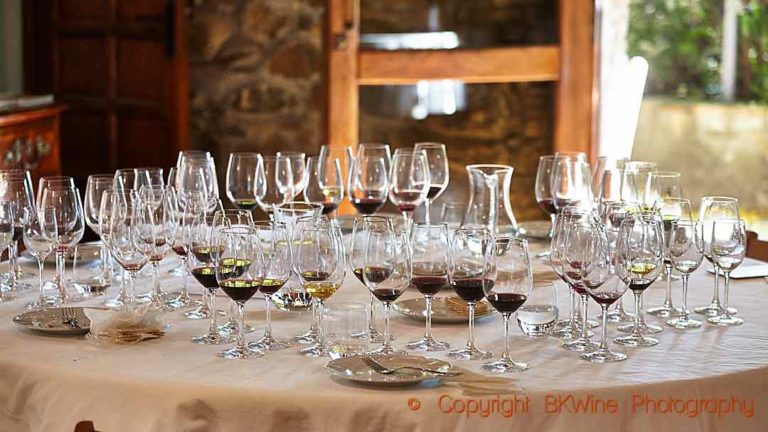


This year’s most hectic wine travel season has come to an end. The very last of our autumn wine tours, to a Sicily with nice summer-ish weather, finished on Sunday.
The only remaining travel on our schedule is a wine tasting tour to half a dozen places (in Sweden) for Britt and a trip to vinous Turkey (!) for Per, for the European Wine Bloggers Conference, or as it is now called the Digital Wine Communications Conference (#EWBC or #EWBC12).
The harvest 2012, a Europe in agreement?
At least Europe seems to agree on one thing: it has been a tough year for the wine growers. In the end however, the quality of the grapes turned out to be very good. And all wine regions agree: 2012 will be a small year in quantity but a great year in quality.
It has been a year with many contrasts: As an example, in Champagne the spring was cold and rain in May, June and July complicated the flowering and brought with it mildew. But in August and September everything changed. With sun and warm temperatures the grapes managed to ripen so well that many producers did not even have to chaptalise (add sugar to increase the alcohol level), usually standard procedure in Champagne.
If in northern Europe they have suffered from cold and wet weather they have had the opposite issues in the south: very hot almost all the growing season and very little rain. The lack of water has made many vines suffer. But every district has its own quirks of course.
In a difficult year like this the skills of the wine grower is put to the test. In France, some people call the 2012 “une année de vigneron” (a winemaker’s year). A year when nature is kind and the weather perfect during the whole growing season anyone can make a good wine (and if you can’t you probably should change jobs). But in a year like 2012 the work in the vineyard and in the cellar matters a lot and the result in the bottle will show you if the wine was made by a skilled winemaker or not.
Classifications! For whom?
Several of the wine tours we have done this autumn have been to Bordeaux. On one of them we had an interesting discussion with one of the chateau owners about the importance of classifications. (Read in The Brief about another owner who is questioning the new Saint Emilion classification.) Looking out over his vineyards in the autumn sunshine the owner said: “one month ago this land was worth one million euro per hectare”. Sounded like quite a lot, but also ominous. Why ”one month ago”? The explanation came rapidly: ”now it is worth four million euros per hectare”.
The chateau was one of those that had just been upgraded to being ”classified” in the new Saint Emilion classification… A good illustration of why classifications are important. For the owners of the chateaux. He also ironically that “this is one of the few occasions when the French government makes the people richer”. But does a classification mean anything for the consumers? Or for the quality of the wines? Hardly. Except, of course, that the wines will become more expensive.
Britt & Per
PS: Recommend to your friends to read The Brief!
– – – – –
[box type=”note”]This is just the introduction to the latest issue of the Brief. Subscribe to the BKWine Brief and you will get the whole edition in your mailbox next month.[/box]








